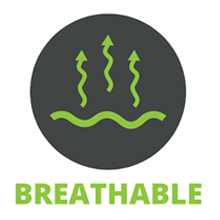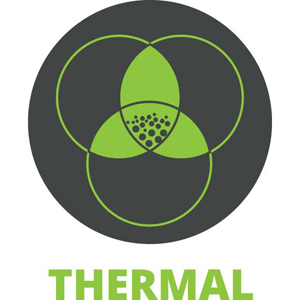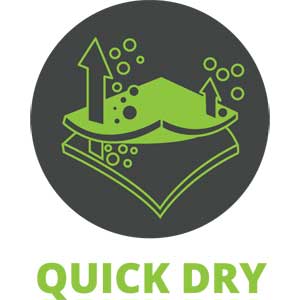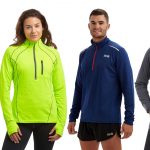As fabrics continue to evolve, the choices open to the modern runner are no longer a simple case of cotton or polyester, the choices now run to different weights & features of different fabrics, making it harder for the uninitiated to make the right choice of clothing. Hopefully, we can dispel some of the myths here.
In the most simplest of terms, and assuming that in each case we’re using technical fabrics, we like to categorise garments into one of three options:
- A skin like compression fit. This, as the description indicates, is worn right next to the skin so that when worn alone, nothing is left to the imagination. The compression is provided by a strong spandex mix in the fabric, the compression aiding the performance of the runner. It should be added that many, many products, especially at the lower end of the market pertain to having compression qualities. In effect though, these garments are quite often manufactured from a low quality lycra that offers no compression qualities at all. As a brand, we do not currently offer any garments that are true compression garments, but watch this space as they’re currently being developed.
- A close fitting fitted cut. Generally speaking, this would be the choice of the everyday runner who likes to combine performance fabrics with flattering looks. These garments, are purely by their nature, designed to sit right on the skin so that moisture is moved effectively away from the body. For the more body conscious runner, a slightly larger size may be more appropriate. A good example of this style, would be the Men’s Pace Spirit Short Sleeved Running T Shirt.
- The final option, the more relaxed cut is a style that offers a more boxier cut. The additional room allows air to circulate freely, is slightly more flattering and can be worn socially or actively, as the user so chooses. A classic example of this would be the men’s Pace Training Shirt. Note that with the relaxed cut, the same lightweight, breathable wicking fabric is used as in the more fitted garments. This way, there is never any compromise on fabric performance.

Irrespective of cut, it's essential that the fabric is breathable-this allows the garment to work in conjunction with other components of the layering system.
As with the cut of the garments, we also like to categorise the fabrics into three options, as follows:
- Lightweight. Designed for indoor and outdoor use in fine weather, lightweight garments form the cornerstone of most runners’ wardrobes. The weight of the fabric allows the fabric to move moisture rapidly so allowing the wearer to remain comfortable at all times. Short sleeves are normally the prevalent choice of most, but come the spring and autumn, longer sleeves are worn for a little extra warmth. Lighter weight fabrics would normally weigh in or around 120 grammes per square metre of fabric. A classic example of a garment using a lighter weight fabric would be the Men’s Pace Spirit Long Sleeved Running T Shirt.
- Midweight. Ideal for three season (autumn, winter & spring,) running, midweight fabrics are perfect for running when the temperature drops a little. For those that like to be warmer, they’re good for a temperature range running from 0 degrees and above. Just be warned though, that when you first head out of the door for your run, you may well feel the cold. As you start to increase the intensity of your workout, the body generates heat that is trapped by the fabric so enhancing performance of the garment. With a fabric weight of around 170 gsm, a classic midweight garment is the Men's Lightweight Thermal Grid Zip Neck Running Top and the Ladies Thermal Grid Zip Neck Running Top. Midweight garments offer real flexibility, especially when worn with a windproof gilet such as the Pace Spirit Reflective Running Gilet.
- Midweight Plus. Ideal for colder weather conditions, these heavier weight garments are traditionally worn on their own when temperatures are not too severe, and as a mid or outer layer in colder conditions. It’s very hard though, to quantify a temperature range as there are so many factors which can affect how we feel the cold. However, we would normally expect to wear midweight+ garments when temperatures are no higher than 5 degrees, but this really is down to personal preference. With a fabric weight of around 220 gsm, a classic midweight+ garment may be the Women's Thermo Zip Neck Running Top and the Men’s Thermo Zip Neck Running Top, that both offer a deep neck zip for ventilation, handy chest pocket and thumb loops for added comfort. Complimenting the Thermo Zip Neck is the Thermo Running Jacket which, with it’s compliment of three pockets and hood, is one of our best selling products and cut specifically for female runners as well as males.

Something as simple as using a fabric which is brushed on the inside enables the garment to increase it's level of warmth without adding weight to the garment.
Note that lightweight garments have no need to be thermal, so the emphasis is on the lightweight, quick drying performance of the fabric. However, for the heavier weight garments, there is most certainly a need for more enduring thermal qualities. The simple solution to add warmth is to increase the weight of the fabric which will obviously have it’s benefits, but only to a certain degree. In order to take the fabric to the next level, it’s important that the fabric is brushed. In layman’s terms, this involves the inside of the fabric, (that is worn next to the skin,) being brushed during production. This creates a nap (fuzzy) effect which allows the garment to trap air within the garment. This air then acts as an insulator helping to keep the wearer warm and comfortable.

Quick dry fabrics allow the garment to actively manage moisture by wicking the moisture away from the skin and into the fabric where the quick dry qualties of the fabric pass it into the air as vapour.
Finishing the story of the technical fabric, it's critical that the fabric used is quick drying. Although some die hards still like to run in cotton t shirts, cotton holds moisture so increasing the weight and drag of the fabric which leads to a really uncomfortable experience when running, especially if it ends up in nipple rash. By using a wicking, quick dry fabric, the garment actively wicks, (or moves away,) moisture from the surface of the body into the fabric. The quick dry qualities of the fabric then move the moisture out and into the atmosphere as water vapour, leaving the user more comfortable than if they were wearing a cotton garment.
And there we are, please feel free to drop as an email if you have any questions on the above.


